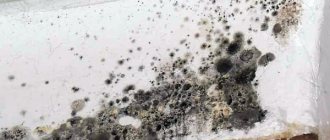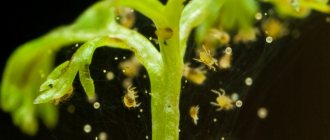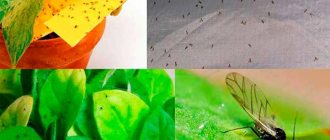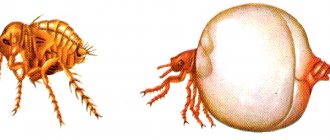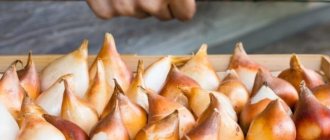What plants do these insects like?
At risk:
- orchids (any),
- ficus (all types of this plant),
- citrus,
- indoor pineapples and other bromeliads,
- palm trees (and most of all these pests like to gnaw fan leaves),
- anthurium,
- dracaena,
- hibiscus,
- oleanders,
- boxwood,
- yucca.
How to understand that a plant is infected
The leaves begin to be “decorated” with brown (less often just light) round scales. They can be removed from the sheet, but with difficulty. This is a “classic” scale insect.
If you look closely, you can see brown-red or yellowish dots - places of insect bites. This is the work of the false shield.
But all types are equally harmful:
- young shoots of the plant dry out;
- young leaves stop growing altogether;
- leaves turn yellow and begin to fall off;
- the plant dies (advanced stage).
Your actions:
- Carefully remove the bitten leaves and twigs. Or soak a cotton pad in a soapy solution or insecticide (more about them below) and wipe off the baddies, and if they bite into the stem, scrape them off with the blunt side of a knife.
- Send the diseased flowerpot to a quarantine windowsill. Inspect all other flowers (even those growing on other window sills) as the strictest inspector.
- Wash the window sill, as well as the frame, with insecticide or the same soap.
- Carry out preventive spraying (washing) among the remaining flowerpots.
- For a diseased plant, replace the top layer of soil with fresh one.
- If the plant can take water treatments (let's say it's an orchid), send it to a hot shower.
- When the leaves are dry, treat them using one of the methods described below.
Characteristic signs of scale insect damage
The appearance of the plant changes when sexually mature females are not yet visible. The foliage becomes dull despite abundant watering.
A sticky coating appears on some leaves. The female scale insect secretes a sweetish liquid - honeydew. This secretion becomes a favorable environment for another pest - sooty fungus (mob). Later, sticky marks appear around the pot on the windowsill and on the glass.
With the naked eye, you can see brown-gray plaques on the stem or leaves, around which yellowish spots grow.
The foliage becomes deformed and begins to fall. Young shoots dry out and become distorted. Cracks appear on the bark. The plant may drop buds. The growth and development of the flower slows down.
You need to know the enemy by sight
Plants affected by scale insects have their own distinctive characteristics.
With enough attention, you can quickly see and eliminate the insidious enemy:
- Without sufficient mimicry, scale insect plaques are still noticeable on leaves and stems. Looking into the axils of the leaves and feeling the trunk of the plant for roughness, it is easy to notice bulges and tubercles that are not inherent to the plant.
- Scale insects secrete a kind of sticky liquid (honeydew). Sticky in consistency, it covers the leaves in uneven spots, and with a strong invasion it even leaves marks on the surrounding stands and floor. If you notice that the dust on the leaves has begun to settle uncharacteristically densely, the leaves have stopped shining or, conversely, have acquired an uncharacteristic shine and are sticking together, then there is a reason to panic.
- Sooty fungus, which is often confused with other plant diseases, loves to take up residence in places where honeydew accumulates. It does not feed on sap, but greatly spoils the appearance of the plant and clogs the pores on the leaves, impairs photosynthesis, and leads to their gradual death. Washing gives a weak effect without eliminating the underlying cause.
- The false scale insect not only sucks out the sap of the plant, but also injects a toxic liquid that harms the plant. The appearance of dying lesions, for example on orchids, will signal a thorough inspection.
- With normal watering, the plant suddenly begins to wither and dry out. Additional watering only accelerates the death of the plant, leading to rotting of the roots. And the reason may be the accumulation of a colony of scale insects at the base of the plant stem.
- Scale insects are almost omnivorous. Favorite delicacies, according to the observations of flower growers, are cyperus and laurel. If any variety is present in the collection of plants, the scale insect strangely attacks them with the main composition. But she does not disdain other plants. Cyperus is like a litmus test: if uninvited guests appear on it, there is a reason to send other pets for prevention.
Ways to combat scale insects
The infected plant must be isolated when the first signs of infection appear. The remaining flowers should be carefully inspected and washed under a warm shower.
You need to watch them every day, paying special attention to fragile sprouts.
Mechanical method
Physical methods can be effective only at the early stage of the disease. The plant is washed with hot water (but not higher than +45ºС) and placed in an open place to dry. The window and window sill should be washed with laundry soap and soda.
The top layer of soil should be changed or the flower should be replanted. It is recommended to treat the old pot with disinfectants.
Adult female scale insects can be easily removed with a toothpick. The leaves can be washed with soapy water, collecting insects with a gauze napkin. It is useful to alternate this procedure with wiping with an alcohol solution.
Every 4-5 days the treatment is repeated (up to 5-6 times). When not a single individual is visible on the plant, larvae may be hiding in the thickness of the leaf blade.
If all the above-ground organs of the plant are affected and necrosis (death) develops, the flower is destroyed. It is necessary to collect fallen leaves and burn them along with the flower.
Folk remedies
Old, proven recipes that contain natural ingredients help remove parasites:
- Mix wood ash (300g) with tar soap (10g) dissolved in a liter of hot water; boil for 25-30 minutes. Before processing, add water to obtain a 10% solution (100 ml of soap emulsion and 900 ml of water).
- Beat machine oil (45 ml) with 15 ml of liquid soap; Apply foam to all parts of the flower, rinse with warm water after 10-12 hours.
- Prepare a mixture of hot red and black pepper, cinnamon and dry mustard in equal proportions; add it to a solution of green or laundry soap.
- For minor damage, use garlic infusion, onion pulp, or a decoction of tobacco leaves.
Ants help control parasites. If possible, the pot is taken to the area where they are found and left for several days. Ants destroy larvae and females, and also remove honeydew.
Use of insecticides
Chemical methods in combination with physical ones will help get rid of scale insects with massive damage. Insecticides should be used strictly according to the instructions, observing the dosage and frequency.
The shield shell serves as good protection for adult insects, so a single spraying with chemical solutions does not give the desired effect.
One of the most effective is Aktara, a systemic preparation for spraying and applying to the soil. After abundant watering, the toxic solution is absorbed through the root system, enters the plant juices and has a detrimental effect on parasites.
The effect is observed after a day, larvae and adults die. The drug will not affect eggs, so it is better to repeat the treatment.
Broad-spectrum drugs include Nitrafen, Inta-vir, Actellik, Mospilan, Fitoverm, Confidor, etc.
We must not forget that after processing the fruits cannot be eaten.
It is best to process plants outdoors in calm weather, protecting the skin, eyes and respiratory tract.
Folk remedies for fighting scale insects
To carry out mechanical treatment of indoor plants, it is permissible to use other substances, not just soap. These pests are afraid of alcohol, kerosene, etc. If there are not many pests, you can speed up the treatment process by arming yourself with a toothbrush. With its help, it is possible to deal with such parasites much faster. Folk recipes help fight not only scale insects, but also other equally dangerous insects.
Effective compositions include:
- Soap and alcohol based solution. To do this, you need to mix 15 ml of liquid soap and 10 ml of alcohol, pouring this mixture into 1 liter of hot water. After this, the solution must be thoroughly stirred until foam appears. Before using the composition, it is better to first try it on individual leaves to determine how the plant will react to this solution. If after half an hour the flower has not responded to this composition, then it can be safely applied to the entire plant.
- A solution based on soap and machine oil. To do this, you need to take 10 ml of liquid soap and machine oil (30 grams) and beat the mixture until foam appears. Before the processing process, it is advisable to cover the soil in the pot so that the solution does not get on the root system. The solution is applied to the affected plant and left for up to 12 hours, after which it is thoroughly washed under cold running water. After a week, the treatment procedure should be repeated. To completely destroy the pest, 3 treatments are enough.
- A solution based on washing powder and burdock oil. To do this, you need to take 10 grams of washing powder and burdock oil, then stir them in 1 liter of water. After this, the solution is left for 4 hours to infuse. The solution is used for regular wiping of indoor plants. To prevent scale insects from appearing on flowers, it is enough to carry out the treatment procedure once a month.
- Solutions based on tar soap or wood ash. For 1 liter of water, it is enough to take about 10 grams of soap. A solution based on wood ash is made as follows: take 300 grams of ash and place it in 1 liter of boiling water, after which the solution must be boiled for another half hour. Before using a solution based on wood ash, it should be diluted in 10 liters of water. Leaves and stems are sprayed or wiped with this solution, but the soil will have to be protected by covering it with plastic film.
Products containing several components are considered no less effective. For example:
- Onion pulp is first applied to the plant, mainly in those areas where there is an accumulation of pests, after which it is removed mechanically. Then all that remains is to treat the indoor plant with a soap solution.
- Take 25 grams of green soap and 100 grams of tar soap. These substances are dissolved in 1 liter of water, after which 5 drops of kerosene are added to the solution. The composition should be poured into a spray bottle and all plants are treated with it. After this, the treated plants are washed under running water after some time.
Use of chemical control agents
If the scale insect has managed to move onto all the plants in the house, then you won’t be able to limit yourself to traditional methods of control. This is the time to use chemicals, such as insecticides. They are highly effective and will be able to cope with parasites in a short time.
To combat scale insects, the following remedies can be suggested:
- Aktar.
- Metaphos.
- Fitoverm.
- Permethrin.
It is better to work with chemicals outdoors; alternatively, a balcony is suitable. First, you should mechanically remove pests, treat the plant with a soap solution, rinse it well under running water, and then treat it with a chemical composition. After this, the flower is placed in a plastic bag and left there for half an hour. Then the bag is removed and the flower is washed under running water. If you do this more than once, you will be able to say goodbye to such pests once and for all. To prevent scale eggs from remaining in the pot, it is better to replace the top layer of soil.
Prevention measures
Oddly enough, they are elementary and include the usual recommendations for caring for your favorite plants.
- Keep the flower you just bought for a while on a separate windowsill or chair. And only after making sure that you did not bring uninvited guests into the house along with the plant, move the pot to your “winter garden”.
- Ventilate the room with flowers (especially at the end of the winter season and in the first months of spring).
- Spray your pets more often (unless, of course, such a procedure is contraindicated for them).
- Well, of course, inspect them. But this should be done not superficially, but from below: take the pot in your hands and evaluate the underside of the leaves. You can use a magnifying glass.
I wish you to be familiar with the scale insect only from the photo! And if your flower “caught” a similar disease, patience and perseverance to you and health to it!
Measures to combat scale insects in the garden
Fighting scale insects on currants and gooseberries
Scale insects in the garden are just as insidious and difficult to eradicate as the pest species that live on indoor plants. Scale insects spread mainly with planting material, but there are other ways to infect garden plants with pests.
Scale insects often infect currant and gooseberry bushes. Scale insect larvae hatch during flowering and immediately attach themselves to shoots, branches and leaves. Young individuals are easily exterminated with the help of pesticides, but adult scale insects, reliably protected by a waxy layer and a chitinous shell, are practically invulnerable to most toxic drugs. The main way to rid garden plants of scale insects is mechanical cleaning with a metal or hard plastic brush. It is better to remove and burn leaves and shoots that are infested with a large number of pests.
Chemical and folk remedies for combating scale insects consist of preventive treatments of bushes. In early spring, before sap flow begins, plants and the ground underneath are treated with a three percent Nitrafen solution to destroy pest larvae that have overwintered in the top layer of soil and in the bark of branches. Washing the branches of shrubs with a soft cloth with a soap-kerosene emulsion is effective, and this procedure should be as regular as watering.
The scale insect damages not only berry bushes, but also fruit trees, as well as garden ornamental plants, however, the methods of controlling the pest on all these crops are carried out using the same methods.
Brief summary
To get rid of scale insects, treatment begins immediately when the initial signs appear. Carry out mechanical cleaning with soap and detergent solutions. They use folk remedies, effective insecticides, and affordable medications for treating cats and dogs against fleas. Follow the frequency of treatment 2-3 times, which will avoid recurrent infection.
Currently reading:
- How to grow Chinese cabbage in open ground
- Planting to decorate the site with three types of coniferous trees
- Using hydrogel in open ground for plants
- Persistent, large harvest of cucumbers after planting them as seedlings
Share the news on social networks
About the author: Lyudmila Vasilievna Nosikova
Agronomist of the state agricultural enterprise "Garovskoe" of the Khabarovsk region of the Khabarovsk Territory.
Prevention
Newly acquired flowers are carefully examined. Suspicion is raised by:
- Warts;
- spots;
- Bulges;
- Dark grain;
- Sticky honeydew.
New plants are kept in quarantine for 14-15 days, maintaining good light and humidity. To do this, place the flower in a greenhouse or greenhouse. Light and plenty of moisture are unattractive for scale insects to reproduce. To treat the leaves, flower growers recommend Neem oil, which is obtained from the seeds of the same tree, which resembles an olive. The active ingredient is sualin, which has a strong repellent effect.
- https://GardenGround.ru/problemy/shhitovka-na-komnatnyx-rasteniyax/
- https://roza-i-fialka.ru/articles/vrediteli/schitovka-na-komnatnyh-rasteniyah.html
- https://GdeKlop.ru/other/izbavlyayutsya-ot-shhitovki-na-komnatnyh-tsvetah/
- https://domvred.ru/shhitovka-kak-izbavitsya-sposoby-borby/
- https://GdeKlop.ru/other/kak-izbavitsya-ot-shhitovki-v-sadu-agrotehnicheskie-priemy-i-effektivnye-preparaty/
Shield: description
Scale insects belong to the Pseudococcid family. The scale insect has a general resemblance to the false scale insect, so it is quite difficult to find out exactly what kind of insect destroys indoor flowers. The only difference is the presence of a shell, which is removable. When they try to remove an insect from a plant, its shell is first removed, which indicates that a real scale insect has settled in the apartment. The pest's shell consists of wax and covers almost the entire body. The scale insect leads an active lifestyle, both in summer and winter, actively feeding on plant juices. These parasites do not bypass even poisonous plants, and if you do not start fighting them in a timely manner, the result will be the same - all plants will die.
In addition to the fact that they attack indoor ornamental plants, scale insects prefer garden plants that they like best. This parasite can be seen on many types of plants such as citrus, bromeliads, palms, etc. To save the plant from death, you should not postpone the fight against such pests “for later.” For greater effect, it is better to use all available methods of control, including folk recipes, as well as preventive measures.
What do scale insects and false scale insects look like?
False scale / Photo: James Clay
Both pests belong to the sucking insects of the coccid family. Scale insects have sizes up to 0.5 - 5 mm, while false scale insects - 3 - 7 mm.
Female pests are larger than males and have neither legs nor wings. They sit motionless in one place, covering the clutch of eggs. Males have wings and limbs. They are the ones who suck the sap of the plant. After some time, the larvae attach to the plant and become covered with a plaque-shaped shield.
You can independently determine what type of parasite has occupied your pet. To do this, carefully remove the insect from the plant. If there is a scale insect in front of you, its body will remain in place. You can only remove the shield. Did you manage to remove the entire body of the parasite? This means you are dealing with a false scale insect.
The body of pests is covered with a shield of wax, which comes in different colors. In the scale insect it is usually pea-shaped, while in the false scale insect it is flat.
What danger does it pose to house flowers?
Scale insects live in colonies. They absorb all the substances necessary for the normal functioning of the flower.
Adult female scale insects are tightly attached to the surface of the plant, thereby ensuring the safe existence of eggs and larvae. Red-brown or yellow spots remain in these areas.
After some time, the first signs of pathology in the life of the plant appear. The leaves begin to turn yellow, the stems develop incorrectly, and the buds fall off. Over time, the diseased plant stops growing, and its stems become bare. Then the flower gradually fades and dies.
External signs of infection
Determining the presence of scale insects on a plant is not difficult. If you look at the leaves of a diseased flower, you can easily notice small tubercles or rounded plaques. They can be yellow, brown or green.
Most often, scale insects can be seen on the outside and inside of leaves. Insects, as a rule, are located along the veins.
A sign of the presence of scale insects at the initial stage of flower infection, when the pests themselves are not yet visible, is the sticky surface of the leaves. This is explained by the ability of the insect to produce a secretion in which sooty fungus subsequently settles, which in turn also adversely affects the health of the plant.
First actions upon detection
If you notice that the plant has begun to wither and wither, and then you find these dark tubercles on the leaves, then you need to isolate such a flower in another room where there are no plants at all. And only after isolation can you begin to save the plant from these parasites.
Subtleties and secrets
When treating an affected flower, you can resort to both traditional methods and pesticides. Having opted for the second option, one must take into account that such products can cause allergies and poisoning of small children, the elderly, allergy sufferers and pets.
On a note. Folk remedies are no less effective against scale insects, and at the same time they will not have a negative impact on people and animals living in the apartment. Therefore, they most often resort to treating indoor plants using traditional medicine methods.
Prevention measures
To prevent scale insect infection in early spring, it is recommended to treat the plants and the soil under them with a 3% Nitrafen solution. This will help destroy overwintered pest larvae. Then you should regularly wash the plants with a soap-kerosene solution.
To eliminate the risk of infection, it is also recommended:
- inspect flowers every two weeks for pests;
- provide high-quality care and conditions for keeping plants to maintain their immunity;
- Avoid excessive watering; excess water in the pan should be poured out in a timely manner;
- use fertilizers;
- promptly change the pot to a larger container as soon as the plant’s roots become crowded, and periodically update the top layer of soil.
Attention! It should be taken into account that parasites prefer a dry and warm habitat and do not tolerate high humidity and sunlight. Fighting scale insects requires time and effort
To avoid possible problems, it is recommended to apply preventive measures in a timely manner. If an infestation does occur, several pest control methods should be used simultaneously. This will increase the chances of getting quick and lasting results.
Fighting scale insects requires effort and time. To avoid possible problems, it is recommended to apply preventive measures in a timely manner. If an infestation does occur, several pest control methods should be used simultaneously. This will increase the chances of getting quick and lasting results.
Structure
Scale insects differ by gender. Females are larger in size, reaching five millimeters. They have a wax shield, but lack legs and wings. Males are smaller, with wings and limbs. Adult female scale insects are motionless, young larvae move without a shield. Males, having wings, fly over plants. Therefore, fighting scale insects involves a certain complexity. After treating the plant, the pests may return.
Scale insects reproduce by laying eggs on the back of leaves. The eggs are very tiny and require a magnifying glass to see them. As they grow, they feed on plant sap. Having lost their vitality, the flowers die. Scale insects begin their feast from young shoots, switching to leaves and stems.
The favorites of scale insects are palm plants, ivy, and citrus fruits. Two weeks are enough for them to completely destroy a plant that has reached half a meter in height. After their attack, only a dead stem remains.
Ways to fight
Indoor plants most often suffer from scale insects in the spring, when, like people after winter, their immunity is weakened. They desperately need feeding, ventilation, spraying, and wiping the leaves. It is by caring for and carefully examining the plant that you can notice pests. The sooner the fight against scale insects is started, the greater the chances of saving the plant.
When treating, you should follow a strict sequence. First you need to find the source of infection - the plant on which the scale insect originally appeared. This plant is declared “quarantine” and must be isolated from others. Having taken him to a separate room, you need to urgently begin resuscitation.
For these purposes, the place where the plant was previously located is washed with soapy water. Pests must be removed by hand, that is, moisten a cotton swab in an insecticide solution and remove all scale insects.
Young individuals will hide from cleaning. To destroy them too, you next need to wash the plants with a soap solution or tobacco infusion. Using a toothbrush with the indicated products, carefully treat the affected areas. After a day, the solution must be washed off and the plant dried.
Then re-treat everything with insecticides, covering the plant with a plastic bag for about forty minutes after treatment, excluding air from entering.
If everything is done correctly, then in two days all the scale insects will die and the plant will be saved. At the final stage, the plant is washed again to remove dead pests.
Such procedures should be done once a week until the desired effect is achieved, until the enemy is completely eliminated. If treatment is started in a timely manner, then just a week will be enough to completely rid your pet of the scale insect. In the future, you should carefully inspect the plant every time to prevent a recurrence of pest invasion.
How to fight with traditional methods
There are many traditional ways to get rid of scale insects. So, how to deal with scale insects that appear on indoor plants using soap solution, machine oil, onion or garlic, pepper, tobacco, kerosene?
- To obtain a soap solution, household, tar or green potassium soap is suitable. They should treat the plant itself, the pot with the tray, and even the window frame with the window sill. It is recommended to remove the foam after 2–4 hours. For 300 grams of water you need to take 1 tablespoon of crushed soap. For greater effect, you can add 1 teaspoon of ammonia.
- The following recipe: about 10 grams of soap are mixed with 20 ml of machine oil (it is acceptable to use 2 tablespoons of sunflower or olive oil). You need to treat the flowers with the resulting emulsion and leave them for at least 6 hours, then rinse off. It is best to carry out 2-3 procedures with a break of 1 week.
- Grind 5 cloves of garlic, pour them with 1 glass of water and leave for 1-2 days. Before spraying, filter the infusion. It is required to treat the affected areas once a week.
- Finely chop a medium-sized onion, add 1 glass of water and leave for 2 hours. The processing procedure is the same as in the case of garlic.
- When using pepper in an amount of 50 grams, it must be crushed and boiled in 500 ml of water, after which the finished infusion is left for 1 day. Before use you need to strain. When washing and spraying, 10 ml of pepper tincture is usually mixed with 5 grams of laundry soap and diluted in 1 liter of water. Treatment can be scheduled once every 2 weeks.
- It is recommended to pour dry tobacco with 1 liter of water and leave for 1 day. After which it is recommended to strain and dilute with 1 liter of water.
- 40 grams of laundry soap or 25 grams of green potassium soap along with 5 drops of kerosene are diluted in 1 liter of water. Next, spray or wipe the affected areas.
Control measures
If suspicious spots and sticky marks are found on one of the plants, it must be isolated and the remaining flowers carefully examined. The body of adult scale insects is protected by a shell, so insecticides may not affect them, but will kill the larvae. It is advisable to remove sexually mature insects mechanically, using a cotton pad soaked in a solution of laundry or green soap. You can also use a soft toothbrush.
It is necessary to carefully inspect the underside of the leaves and the nooks and crannies at the base of the stem in order to immediately get rid of the largest number of pests. After half an hour, place the flower under hot water (45–50°C) and wash off the soap for 3–5 minutes. Sometimes these procedures alone, repeated several times, are enough to completely get rid of the scale insect.
Chemicals
The leaf washing method is not suitable for every flower. For example, dracaena leaf blades are narrow and are present in large numbers on the plant. Small-leaved ficuses will also require too much time to wipe each leaf. In this case, it is more convenient to use insecticides.
The following medications will help remove scale insects:
- "Aktellik";
- "Fufanon";
- "Alatar";
- "Karbofos"
- "Spark";
- "Mospilan";
- "Fitoverm";
- "Admiral";
- "Tanrek."
The listed insecticides have a contact effect and are more suitable for killing larvae.
To combat adult scale insects, a systemic remedy will be more effective, for example:
- "Aktara"
- "Confidor"
- "Confidelin".
All drugs are used exactly according to the instructions. Usually, not one, but 2-3 treatments are required.
It is also necessary to disinfect the window frame and window sill on which the diseased flower was located.
There should be no people or animals in the room during treatment. After spraying, be sure to open the window for ventilation.
Folk remedies
Opponents of chemistry can treat flowers with folk remedies. For their preparation, available substances are used that have a detrimental effect on insect pests:
- Soap solution with kerosene. Dissolve 40 g of laundry soap shavings and 5 drops of kerosene in 1 liter of water. The composition is thoroughly mixed and then used to wipe or spray the flower.
- Onion infusion. Chop 1 medium onion and pour 1 glass of water into it. After 2–3 hours, the infusion can be filtered and used for its intended purpose. Instead of onions, you can use fresh garlic - 5-6 cloves.
- Hot pepper infusion. It is prepared from 50 g of fresh chopped pepper and 0.5 liters of water. The mixture is allowed to boil and infused for 24 hours. Before use, the infusion is filtered.
- Infusion of tobacco. To prepare it you will need 80 g of crushed tobacco leaves and 1 liter of water. The product must be infused for 24 hours, then filtered and used for spraying.
Treatment with folk remedies is carried out every 7–8 days until the pests completely disappear. When spraying, be sure to capture the underside of the leaves.
Preventive actions
To avoid bringing scale insects into your home, when purchasing, you need to inspect the plant you are purchasing, and then be sure to quarantine it, placing it away from other flowers for at least a week. When “moving” green pets from the garden back to the house, you should wipe them with soapy water and then take a hot shower.
It is advisable to shed the soil in the pot from time to time with a weak solution of potassium permanganate (at the same time it will serve as a top dressing). You should not leave dried leaves or flower stalks on the plant; they should be removed in a timely manner. Flowers should not be crowded; under such conditions, any diseases spread very quickly.
Scale insects are considered a dangerous pest of indoor plants, but they can be defeated. And in order not to create favorable conditions for the pest in your home, you need to monitor the sanitary condition of the flowers and maintain their immunity with proper care.
Causes of appearance and damage caused
The danger of scale insects is indicated by the following fact:
In the event of a massive attack of this insect on open ground crops in the region, a quarantine may be declared, including a ban on the export of plants and their parts. Under favorable conditions, it easily spreads to neighboring plants.
Therefore, read where it can appear in your indoor plant kingdom and take protective measures.
In the vast majority of cases, scale insects come to houseplants from other green plants purchased from collectors or nurseries.
Less often, it moves from plants in the open ground to indoor flowers that have been taken outside. Or from branches, fruits and leaves of infected specimens.
In very rare cases, pest larvae can be carried through the air onto flowers standing on the balcony.
Information Scale insects are a prolific and dangerous pest. If the plant is left untreated for a long time, then she may fall in love with it completely, and it will only take her 3-4 years to destroy a large tree!
The scale insect is dangerous because it gnaws holes in the leaves and stems through which it sucks out the juices of the plant. It quickly becomes depleted, lacking nutrients, and slowly dies.
You can prevent the appearance of scale insects by following a few simple rules:
- carefully inspect all purchased indoor plants for pests;
- keep new specimens for a week on a separate windowsill before moving them to the rest of the collection;
- take good care of your green pets, as healthy plants have some natural immunity against pests;
- cut off dried and damaged leaves and branches;
- Rinse plants in the shower after moving them from the open air into the house.
Preventive measures
It is easier to prevent infection and excessive reproduction of a pest than to cure plants from it later. Constant monitoring of the condition of the flowers will help not to miss the initial colonization of scale insects on the leaves. The following measures are also effective:
- Compliance with the conditions for keeping indoor flowers. Insects do not like places where there is enough light and moisture. In such conditions, plants acquire strong immunity and successfully resist pests.
- Placing newly acquired specimens in quarantine. Within 2 weeks after purchase, the flowers are observed, and if there are no signs of infection, they are moved to the rest of the collection.
- Regularly ventilate the room and spray the leaves with warm water.
- Trimming and disposing of flower parts showing signs of fungal or pest infestation.
- Monitoring the quality of soil in a pot.
Advice! The “hot shower” procedure helps prevent the proliferation of parasites on indoor flowers. The pot is placed in the bath and the leaves are washed with water, the temperature of which is + 30-35 degrees.
What to process?
Washing the leaves once a month with a soap solution helps prevent the proliferation of pests after an accidental infection with scale insects. This procedure must be carried out after each “walk” of the flower on the street. Window sills and window frames on which plants stand are also wiped with antiseptic solutions.
Scale insects are an insidious and dangerous enemy of indoor flowers. It is very difficult to detect it in the first stages of infection, so it is advisable to use preventive measures. Even flowers severely affected by the parasite can be saved if mechanical, chemical and folk remedies are used simultaneously.
After treatment, ideal conditions are created for the plant, and soon it begins to produce new leaves, and over time it finally comes to life.
Scale insects - preventive treatment
The following preventive measures will help you protect indoor flowers from scale insects:
- constant monitoring of the condition of the soil in pots with plants: it must be of high quality and clean;
- timely removal of dead and weak shoots and mandatory disinfection of cuts;
- frequent ventilation of the room at the end of winter or early spring and maintaining air humidity at the required level, for which the leaves of the plants are sprayed with water, especially on the underside;
- placing all new plants in a month-long quarantine. Quarantine is also necessary for those plants that spent their summer holidays outdoors: before returning indoor flowers to their usual place, you need to observe them for several weeks and, just in case, carry out preventive treatment against diseases and pests.
Anti-scale insecticides - how to use correctly
The most effective remedy is chemical treatment. Insecticides allow you to get rid of the pest relatively quickly, but this does not mean that you can get by with a couple of treatments. In any case, a systematic approach will be required. The most effective drugs for scale insects are those that destroy dipteran insects, including the Colorado potato beetle:
- Aktara;
- Aktellik;
- Fitoverm;
- Fufanon;
- Permethrin.
All these drugs are diluted in water according to the instructions (it can be found on the packaging of the product), and then used according to the following scheme:
Soak a cotton swab or disk in the chemical and wipe the leaves and stems in places where scale insects are visible
It is important to try to remove the shells from the pests, as well as collect clutches of eggs; Place the plant under the shower to wash off mobile pests. If this is not possible, use a sponge soaked in a soap solution; After washing, the plant is sprayed with an insecticide, making sure that all stems and leaves (especially the underside) are moistened with the solution, then cover it with a plastic cap for an hour; After external treatment, water the working solution with an insecticide.
It is advisable to water the soil in the pot first so as not to burn the roots.
Even the most powerful poison against scale insects will not help if you do not take precautions. Pots with flowers on which the parasite is noticed are placed in a separate room so that the pest does not move to healthy crops after the first treatment
They are inspected weekly or every 2-3 days, insects are removed by hand, and the leaves are wiped with soapy water. Healthy plants also need to be inspected - this approach will make it possible to identify migrated parasites in time and begin to fight them.
What is a scale insect?
The insect belongs to the superfamily of scale insects of the Hemiptera family. More than 2 thousand species of scale insects are known. Most of them affect plants that are grown in homes or greenhouses.
Females pose the greatest danger. During their life cycle - several months - they lay thousands of eggs or larvae (viviparous varieties are also found). Under favorable conditions, more females are born; if unfavorable - male. The population is actively changing to take over living space.
Its closest relatives—false scale insects—are also phytophagous. They are similar in appearance and cause no less damage to plants. A distinctive feature is that the protective cover consists of a layer of skin that has died off after molting. This shell is more convex and fused with the body. In true scale insects, the dense waxy formation can be easily separated from the body.
What does a scale insect look like?
The visible part of the insect is a brown or gray rounded shell-shield. The color can be brown, orange, yellow, green or purple.
The size of the “turtle” depends on the species and stage of development. The body length of an adult can range from 0.5 to 5 mm.
Mature females have no legs or wings, and some species lack eyes. They do not move, but attach to the surface, protecting the laid eggs.
Young individuals in the initial stage of development are able to move. This period is called the first instar, and the larvae are called “strays.”
Female larvae of the second instar become motionless and gradually become covered with a waxy secretion. The parasite feeds using a sucking mouthpart, drawing out plant juices.
The male has antennae, limbs, and paired wings. It can fly to neighboring plants. The size of the male individual is smaller, the body has an oblong shape, and the oral organs are poorly developed. Males live less than a day. After mating they quickly die.
Where does he like to live?
First settling on the leaves, the scale insect spreads throughout all above-ground parts of the flower or tree. At the same time, mobile larvae try to select seedlings and young shoots. Sometimes insects attach themselves along the veins on the underside of the leaf, making them difficult to notice.
In advanced cases, you can observe how the stem is completely covered with clusters of parasites. On brown bark, colonies look like growths.
Why do scale insects appear in the house?
Dangerous insects enter the house along with contaminated soil or with new plants purchased at the market or in a store.
Some varieties can be carried by the wind to open balconies and loggias.
Another method is dispersal through phoresy (with the help of other insects).
Indoor conditions are optimal for the life and reproduction of scale insects. A favorable microclimate allows pests to breed even in the winter months.
Chemical treatment
Immediate control of scale insects that parasitize indoor plants can be carried out using modern chemicals. Such drugs differ according to the active substance they contain and their toxicity class, that is, danger to human health.
- For treatment, you can purchase a product such as Akarin. It is made on the basis of avertin and has a low cost, and is considered low-hazard to humans and beneficial insects.
- "Aktara", which contains the substance thiamethoxam, is available in ampoules, is not cheap, but is moderately safe for health and effective.
- "Actellik" based on pirimiphos-methyl has a high cost and is quite dangerous for humans.
- Bankol costs about the same as the previous drug. It is made on the basis of bensultap and is moderately hazardous to health.
- The product “Vertimek”, which contains the substance abamectin, is effective in killing pests and is quite dangerous for humans.
- Inta-Vir is cheaper than the previous chemical. The drug is made on the basis of cypermethrin and is moderately dangerous to our health.
- "Karbofos" has a specific pungent odor and is moderately dangerous. You should be very careful when processing plants.
- Confidor Extra costs almost the same and is not too toxic.
- You can also control pests using the drug “Tanrek” based on imidacloprid. It comes in ampoules and is quite cheap.
- There is also “Fitoverm”, which contains the substance aversectin C. It is as safe as possible for humans and destructive for parasites.
Treatment methods: what means to combat the pest?
In order to get rid of parasites, you must first determine the degree of damage to the plant; if insects are found on only one flower, it is recommended to isolate it from the rest and use a mechanical method of removing pests, as it is the most gentle for the plant.
- To do this, you need to prepare a soap solution and a cotton swab.
- Cotton wool should be moistened in the resulting liquid and treated with it on each leaf and stem.
- Then the surface must be carefully rubbed with a metal or plastic brush. If the infestation is significant, it is recommended to remove the insects with a knife.
- Then the plant should be washed to clean its surface from the soap solution.
- At the end of the procedure, it is recommended to spray with special chemicals.
When treating flowers with insecticides, you should strictly follow the instructions. Often medications do not bring the desired result the first time. Some pests can hide in the axils of leaves or scales of bulbs, so the chemical does not reach them. After a few days, the surviving individuals will reproduce. In this case, re-processing will be required.
For a reliable result (even in the absence of signs of recurrent infection), it is recommended to repeat the procedure after 7 days. If the scale insect has managed to spread to neighboring flowers, all plants should be treated. It is recommended to remove and burn the most pest-infested leaves and shoots.
The top layer of soil and the surface on which the pot with the diseased plant is located, for example a windowsill, are also subject to treatment. If larvae get on it, there is a high probability of re-infection. The surface of the window is also dangerous, so when processing you should not forget about it.
Reference! Insecticides are more effective in controlling scale insect larvae. Chemicals cause almost no harm to adult individuals, since the body of the pests is covered with a thick protective shell.
After the procedure, it is recommended to wrap the pot with the plant in plastic wrap. After a few hours, the flower needs to be washed and the top layer of soil needs to be renewed.
For human safety, spraying with insecticides should be carried out in the fresh air. A plant treated with chemicals should not be left in places exposed to direct sunlight. The following drugs are considered the most effective in the fight against scale insects:
- "Bankol." The product is intended for the extermination of sucking and gnawing insects. Does not have a pronounced odor.
- "Inta-vir". Broad-spectrum drug.
- "Aktellik". It has a high degree of efficiency. It is not recommended for use in closed spaces, as it has a strong and persistent odor.
- "Aktara". Broad-spectrum agent. It is used to treat both plants and soil. The solution should be poured over the roots of the flower. The product spreads throughout all organs of the plant, making it toxic to pests. Can only be used for flowers whose height exceeds 30 cm.
- "Mospilan". Penetrates into any part of the plant, after which it spreads evenly inside it, reaching even those areas that have not been treated.
You can spray flowers not only with special preparations. 96 percent alcohol is also suitable for this. To do this, it is recommended to use a fine spray.
Alcohol can burn the plant. Therefore, it is recommended to first test the product on 1-2 sheets and see how they react. If there are no negative consequences, you can begin treating the entire surface. A small amount of the substance is required. After application, the alcohol should evaporate quickly.
Instead of chemicals, you can use the following folk remedies:
- garlic or onion water;
- pepper tincture;
- solution from celandine juice, etc.
Important! With a large number of scale insects, folk remedies are ineffective. It is recommended to use them only simultaneously with the mechanical processing method.
Fighting methods
How to get rid of it using folk remedies?
- The most common method of exterminating the pest is to wipe the plant with a solution of soap, water and alcohol.
- To do this, dissolve 20 grams of liquid soap in a liter of water, and then add 10 ml of alcohol.
It is necessary to wipe the leaves and stem until the parasites are completely destroyed.
- You can use a brush or a cotton swab, which must be disposed of after treatment.
- The pepper recipe is less dangerous, but it is not inferior to the soap-alcohol composition in effectiveness.
To prepare it you need to take:- 100 grams of hot pepper, mince it.
Then pour the resulting mass with two liters of water and put it in a cool place for a day.
- Next, spray the plant with a strained solution of hot pepper from a spray bottle.
- Similar to pepper infusion, you can also prepare garlic and onion infusion. The effect of such infusions is no worse than pepper infusions.
- When adult females sit tightly on a plant and you can’t remove them, you can resort to kerosene. After all the leaves and stem are lubricated with kerosene, the scale insects will be easily separated.
- This pest really does not like the taste of vodka, so you can lubricate all parts of the plant with it so that the scale insect is completely destroyed.
- Dissolve two tablespoons of olive oil in one liter of warm water and rub the leaves with it. The olive oil composition is applied to the plant once a week.
Thyroid glands cannot tolerate such a mixture of alcohol and soap, so they die within a few hours after treatment. But, unfortunately, not only pests cannot tolerate soap solution, but also some plants. Before using this method, watch the plant’s reaction by applying the composition to only one leaf.
Such water procedures must be carried out twice a week for several months.
How to remove it with chemicals?
There are three types of chemicals used to combat scale insects:
- Contact. Which penetrate the chitin and skin of the pest. Used at the initial stage of the disease.
- Intestinal. Which cause deadly harm when they enter the mouth of an insect.
- System. This group of poisons acts through the poisoned juices of the plant. Parasites, feeding on poisonous juice, die instantly.
Note! Plants that have been treated with chemicals should not be left in direct sunlight.
Chemicals must be purchased at specialized stores for caring for indoor plants. The most common drugs to combat scale insects are:
- Actellik.
This product is used both for spraying plants and for watering soil mixtures. It has proven itself to be a powerful tool in the fight against scale insects. How to destroy a pest with this drug? The solution is prepared with the following ratio - 2 ml of Actellik per liter of water. Stir and immediately treat the plant.Among the positive qualities, it can be noted that the drug can be combined with other chemicals and the ability to treat planting material with it. The negative aspects of the drug include high toxicity and an unpleasant odor.
- Aktara.
A systemic drug with a wide spectrum of action, effective against many pests. Use a product to irrigate and water the substrate. To combat scale insects in a residential area, dilute 1 ml of Aktar in 1 liter of water. Mass death of pests occurs 24 hours after treatment. - Bankol.
This is the best drug for combating scale insects that have settled on indoor plants. The product is a contact agent. It is characterized by low toxicity and odorlessness. The scale insect begins to die from the action of the drug after two to three days. Treatment solution: 0.5 grams of Bankol are dissolved in a liter of water. - Fitoverm.
The product is based on biological components and therefore does not pose a danger to pets and people. It has a detrimental effect on a number of pests of indoor plants. The spray composition is prepared from 2 ml of Fitoverm and 0.5 liters of water.
Important! When working with chemicals, use protective equipment, observe the required dosage, and carefully read the instructions for the medications. It is undesirable for children and pets to be at home during treatment. You can learn more about methods of combating scale insects with ready-made preparations and folk remedies from this article
You can learn more about methods of combating scale insects with ready-made preparations and folk remedies from this article.
Description of scale insects on indoor plants
The pest belongs to the family of hemiptera herbivorous insects. In total there are 2600 species of scale insects. The top of the skin is covered with a shield of wax. Hence the characteristic name. Insects, like midges, suck out cell sap. When the parasite appears, characteristic tubercles form on the leaves. Pests clearly show signs of sexual dimorphism. Males and females differ in external structural features.
Characteristics of females:
- Oval-round body;
- Length 1.5-2 mm;
- Immobility after strengthening the shield;
- Piercing-sucking mouth organ;
- Complete absence of antennae, limbs, wings;
- Covered with a shield similar to a hemisphere, round or convex;
- The surface consists of larval skins and a secretory section;
- Life span is several months.
The scutum is colored brownish-yellow or brownish-golden. The body underneath is pale sandy or white. Skins vary in color at different times.
Description of males:
- The oral apparatus is reduced;
- They move with the help of wings;
- There are organs of vision, legs and wings;
- Color orange, gray;
- There is a head, chest and abdomen;
- The surface skin is fluffy, whitish or silvery;
- The scutes are small.
Male representatives live for several days. They do not harm plants because they do not have an oral organ. They perform a single mission - fertilize females.
Predominantly female individuals (70-80%) are found on plants, since the males die after mating. Females die after laying with the appearance of young larvae.
What kind of insect is this?
The scale insect is a small insect that reaches 5 mm in length. This pest belongs to the Coleoptera family. The body of the scale insect is covered with a durable shell, like a shield. This is where the name of the insect comes from.
Individuals of different species differ from each other in color, size and taste preferences. Insect larvae quickly spread throughout all organs of the plant and suck out the cell sap from it.
At home, the scale insect can function all year round. Insects reproduce at high speed
Therefore, in order to avoid the death of the plant, it is important to take appropriate measures in a timely manner.
Individuals of most pest species lay eggs during the reproduction process (about 3,000 at a time), but some of them are viviparous. Female scale insects live and bear offspring for several months. During this time they cause great harm to the plant. In contrast, males live only a few days. Male individuals are endowed with the ability to fly, so they easily migrate to neighboring plants.
The following is a photo of an insect on a trunk:
Habitat
The scale insect is distributed all over the world; many species came to us from other continents. Insects have many ways to expand their habitat. From remote regions and other countries, the pest comes along with plants brought by importers. It is not easy to detect it in small quantities, so when buying a flower in a store there is no guarantee that the pest will not enter the house.
One female is enough, which can produce offspring without an individual of the opposite sex.
Scale insects live on indoor flowers and in the garden. Plants wither and die due to pest invasion. You can bring insects home in the following ways:
- pick flowers from the field;
- buy an infected plant, from where scale insects will move to others;
- pests can migrate from neighbors through the balcony where flowers are displayed in the summer;
- rarely, but it happens that they are carried by the wind.
How to distinguish from false scale insects?
False scale insects are larger - from 3 to 7 mm. They are without a shield, eggs, larvae find refuge in the mummified body of the female
For the gardener, it is fundamentally unimportant what pests have settled. The nutrition of false scale insects and scale insects is the same, they cause the same harm
They fight them in similar ways.
Folk recipes
Folk remedies for fighting scale insects are much safer. These include:
- Pepper infusion. In order to prepare it, 100 g of hot chili pods must be passed through a meat grinder and the resulting mass should be poured with two liters of water. The mixture is kept in a cool place for 24 hours, after which it is poured into a spray bottle and sprayed on the plants. However, it should be remembered that the scale insects are protected from the action of the poison by a dense shell, and therefore treatment must be carried out only after removing the parasites from the body of the flower. With abundant spraying, the eggs that the pests managed to lay will be destroyed, and the plants will receive reliable protection from repeated attacks. Pepper infusion is used for several months, with two-week intervals between treatments.
- Soap-oil emulsion. This product is prepared from 10 g of soap and 30 ml of machine oil. First, the specified amount of soap is dissolved in 200 ml of water, whipped into foam and oil is added. Before using this drug, the substrate must be covered with a plastic bag. The plant is treated with the solution and left for 6-12 hours. After the specified time, the remaining product is removed with cold water. It is necessary to use the soap-oil emulsion two to three times with a week break.
- A soap solution is the most common folk remedy that helps get rid of not only scale insects, but also other herbivorous insects. To prepare it, dissolve 20 g of soap shavings in a liter of water and add 10 ml of pure alcohol. The stems and leaves of affected plants are treated with the prepared liquid once a week. It is used several times until there is not a single parasite left on the flower. It is most convenient to carry out the treatment using a brush, wiping both the leaves and stems of the plant with the solution. To destroy eggs, affected specimens should be treated for several months.
- Onion gruel. Another quite effective remedy for scale insects, which is prepared as follows: we free the onion heads from the husks and pass them through a meat grinder. The resulting slurry is applied to the damaged areas using a soft toothbrush, after which the flower is treated with a soap solution from a spray bottle.
In addition, in the fight against scale insects, it is useful to know that its reproduction and development is noticeably slowed down at low humidity and under the influence of direct sunlight. And if the plants that you are going to cure are resistant to these factors, it is advisable to slightly reduce their watering and move them to a more illuminated place. Plus, the room needs to be ventilated more often and indoor flowers should be placed away from each other - by avoiding crowding, you will ensure proper ventilation.
